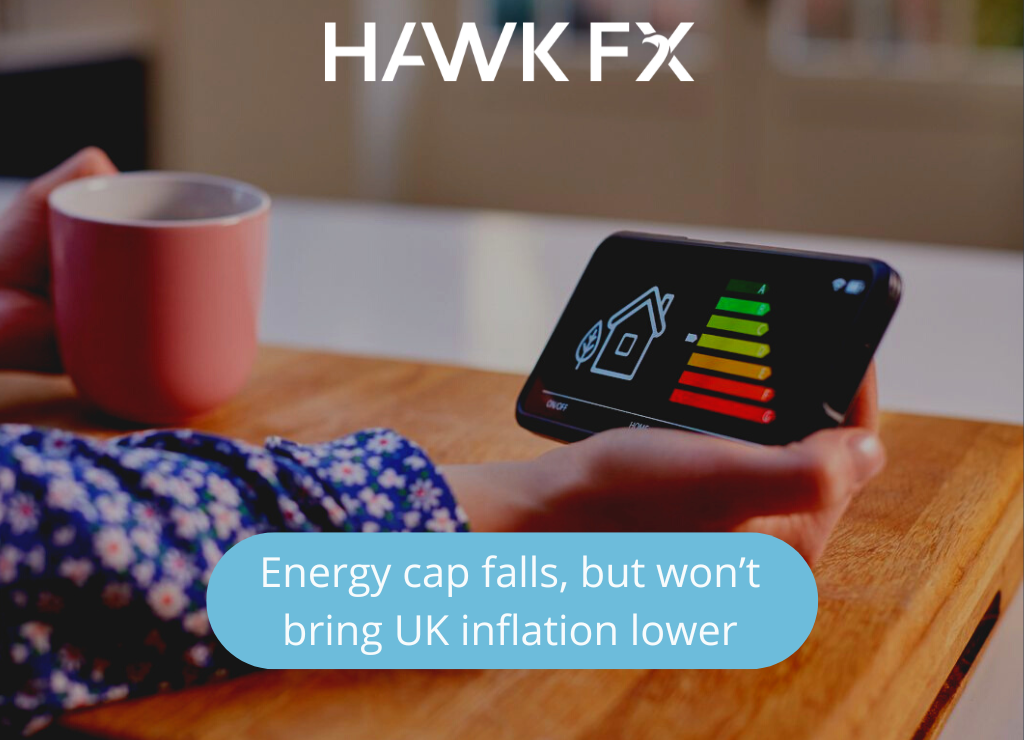
The expectations for further central bank rate hikes increased last week, with data suggesting economic activity is in better shape. The PMI reading for February showed a strong increase back to growth at 53.3. The manufacturing measure also returned to expansion. Consumer confidence increased to the highest level for almost a year. Meanwhile, strong income tax receipts and lower energy prices point to less government borrowing, which may give more flexibility in the Budget on 15th March.
These more positive signals for economic growth, with inflation remaining elevated, will no doubt keep the pressure on central banks. Markets expect further tightening from the Bank of England this year as a result. Energy prices are falling, but this won’t directly impact the customer. The energy cap has fallen to £3,280 (from £4,279), but this is still above the government energy price guarantee level of £3,000. As a result, consumer energy prices will go up in April, which will prevent inflation from falling quickly. The July cap is likely to result in a reduction in prices below the EPG, but that will delay the fall in inflation to the second half of the year.
As a result of energy prices, pressure on household incomes will likely persist. Consumer credit has been volatile recently and fell in December with mortgage approvals weakening in recent months. The Bank of England will no doubt be watching the Decision Maker Panel survey to see whether wage growth and CPI expectations continue to fall. If they do, this could lead the central bank to temper its thoughts around further rate hikes.
GBPEUR – 1.1323
GBPUSD – 1.1932
The Eurozone PMI survey results also suggested more upbeat prospects for growth. There were mixed signals for inflation in the survey, with businesses reporting that supply bottlenecks eased, though service sector inflation remains high. Markets didn’t react too much to a revision in German GDP to -0.4% in the final quarter. The forward-looking German IFO survey reported a further recovery in business expectations.
This week, the spotlight will be on the flash estimate for February CPI inflation. We expect inflation to fall for a fourth month to 8.0%. That would suggest that we may see the European Central Bank slow the pace of interest rate hikes in the second quarter. They are expected to hike rates a further 0.5% at the March meeting. Core inflation may well remain unchanged at 5.3%. High core inflation, is a particular concern for more hawkish members of the ECB Council. We will also see the account of the February ECB meeting when rates were raised by 0.5%.
EURUSD – 1.0538
EURGBP – 0.8832
Last week we saw a strong strong rise in personal spending, a fall in jobless claims, and an unexpected rise in inflation with upward revisions in the PCE deflator. The question remains how much of these data are a result of unusually mild weather and how Fed policymakers might react to them. The positive signals for economic growth and high inflation will likely keep pressure on the Fed to increase interest rates further. Markets are currently pricing in a further 0.75% of Fed rate hikes.
This week, we have the ISM surveys which we expect to show solid growth in services of 55.4. We will also see the durable goods orders, and goods trade balance, which is expected to continue to paint a picture of positive growth. There remain some challenges to creating a soft landing, as seen by the revision to the fourth quarter GDP, down to 2.7%. If the data continues to be positive, the Fed may adjust its policy with higher interest rate projections. The markets seem to be fairly closely aligned more to the existing view of most Fed policymakers.
GBPUSD – 1.1932
EURUSD – 1.0538
Do get in touch if you would like to discuss this further.
*Interbank rates correct at 7 am on the date of publishing.